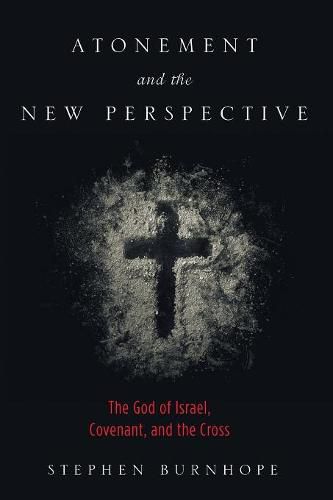Readings Newsletter
Become a Readings Member to make your shopping experience even easier.
Sign in or sign up for free!
You’re not far away from qualifying for FREE standard shipping within Australia
You’ve qualified for FREE standard shipping within Australia
The cart is loading…






This title is printed to order. This book may have been self-published. If so, we cannot guarantee the quality of the content. In the main most books will have gone through the editing process however some may not. We therefore suggest that you be aware of this before ordering this book. If in doubt check either the author or publisher’s details as we are unable to accept any returns unless they are faulty. Please contact us if you have any questions.
Atonement has been described as the central doctrine of Christianity and yet, surprisingly, the church has never insisted on a particular understanding of how redemption in Christ was achieved. Instead, a miscellany of metaphors has been employed, each picturing something of Christ’s work. Recent debate within Reformed Evangelicalism has been characterized by claims for hegemony to be granted to penal substitution versus counter-arguments for a kaleidoscopic, multi-model understanding. Notably absent in these discussions, however, are two considerations. One is any common nexus to draw atonement thought together. The other is any positive theological contribution deriving from God’s preexisting relationship with Israel (the presumed role of which has rather been to provide a negative contrast of law-versus-grace and works-versus-faith, as the dark background against which the light of Christ may shine more brightly). Recent scholarship, however–particularly the new perspective on Paul–has comprehensively dismantled the old stereotypes concerning first-century Judaism. This book asks how differently we might think about the atonement once it is brought into conversation with the new scholarship. It concludes by proposing a new perspective on atonement in which Christ is central, Israel and Torah are affirmed, and the traditional metaphors continue to find their place.
$9.00 standard shipping within Australia
FREE standard shipping within Australia for orders over $100.00
Express & International shipping calculated at checkout
This title is printed to order. This book may have been self-published. If so, we cannot guarantee the quality of the content. In the main most books will have gone through the editing process however some may not. We therefore suggest that you be aware of this before ordering this book. If in doubt check either the author or publisher’s details as we are unable to accept any returns unless they are faulty. Please contact us if you have any questions.
Atonement has been described as the central doctrine of Christianity and yet, surprisingly, the church has never insisted on a particular understanding of how redemption in Christ was achieved. Instead, a miscellany of metaphors has been employed, each picturing something of Christ’s work. Recent debate within Reformed Evangelicalism has been characterized by claims for hegemony to be granted to penal substitution versus counter-arguments for a kaleidoscopic, multi-model understanding. Notably absent in these discussions, however, are two considerations. One is any common nexus to draw atonement thought together. The other is any positive theological contribution deriving from God’s preexisting relationship with Israel (the presumed role of which has rather been to provide a negative contrast of law-versus-grace and works-versus-faith, as the dark background against which the light of Christ may shine more brightly). Recent scholarship, however–particularly the new perspective on Paul–has comprehensively dismantled the old stereotypes concerning first-century Judaism. This book asks how differently we might think about the atonement once it is brought into conversation with the new scholarship. It concludes by proposing a new perspective on atonement in which Christ is central, Israel and Torah are affirmed, and the traditional metaphors continue to find their place.